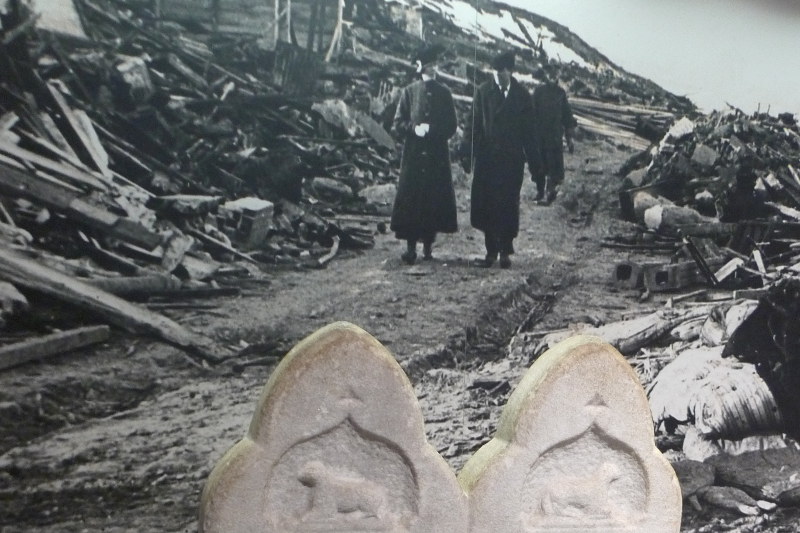On the morning of Thursday, December 6, 1917, the French munitions ship the SS Mont-Blanc, collided with the Norwegian SS Imo in the narrow segment of the Halifax Harbour. The resulting explosion killed or severely injured over 10,000 people, levelled entire sections of the city, and went into history as the world’s largest accidental explosion.
Stories from the explosion are still told by many Nova Scotia families. Below is a small collection from the Maritime Museum.
Charles Upham
“Charles Upham, yardmaster at the Richmond Railway yards, arrived home to Rector Street from a night shift. He stoked the furnace well before going upstairs to bed.
Awakened by the explosion, he found his two oldest children, both obviously injured. The oilcloth covering of the smashed staircase was still intact. He made them slide down, settled them at a distance from the house, which was already ablaze, and rushed back for his wife and the three little ones. It was too late.
Later he took some comfort from the fact that he had heard no cries.”
Months after the explosion, when Charles sifted through the burnt wreckage of the house, he did manage to find doll dishes that belonged to Millicent, his only surviving daughter.
Richard Moxon and Family
In 1917, Richard Moxon worked on the Halifax waterfront as a teamster. That year, he ordered a tombstone for three of his children who had died in an epidemic 29 years earlier. For some reason, Moxon asked the Robertson marine hardware store if he could store it in their warehouse.
On December 6, fate intervened. Among the deaths were Richard Moxon and all members of his immediate family. Their home, on Roome Street, was in the direct path of the explosion.
After the explosion, the Robertsons tried to determine where Moxon’s children were buried but only discovered that the graves were “somewhere in Hants County”. The tombstone remained unclaimed in their warehouse until 1973 when William Robertson & Son were closing out their business. When the Maritime Museum of the Atlantic moved into the old Robertson store and warehouse in 1982, the stone was given to the Museum where it remains as a memorial to a double tragedy.”
Ralph the Dog
Ralph lived aboard the steamship Imo. His master was Captain Haakon From who was killed after their ship hit the munitions ship Mont-Blanc and triggered the 1917 Halifax Explosion. Ralph survived the blast but refused to leave the wrecked Imo where he continued to defend the cabin of his dead master against all who entered. Soldiers trying to secure and salvage the ship eventually had to shoot him.
Below is Ralph’s collar — kept as a testament to his loyalty.
